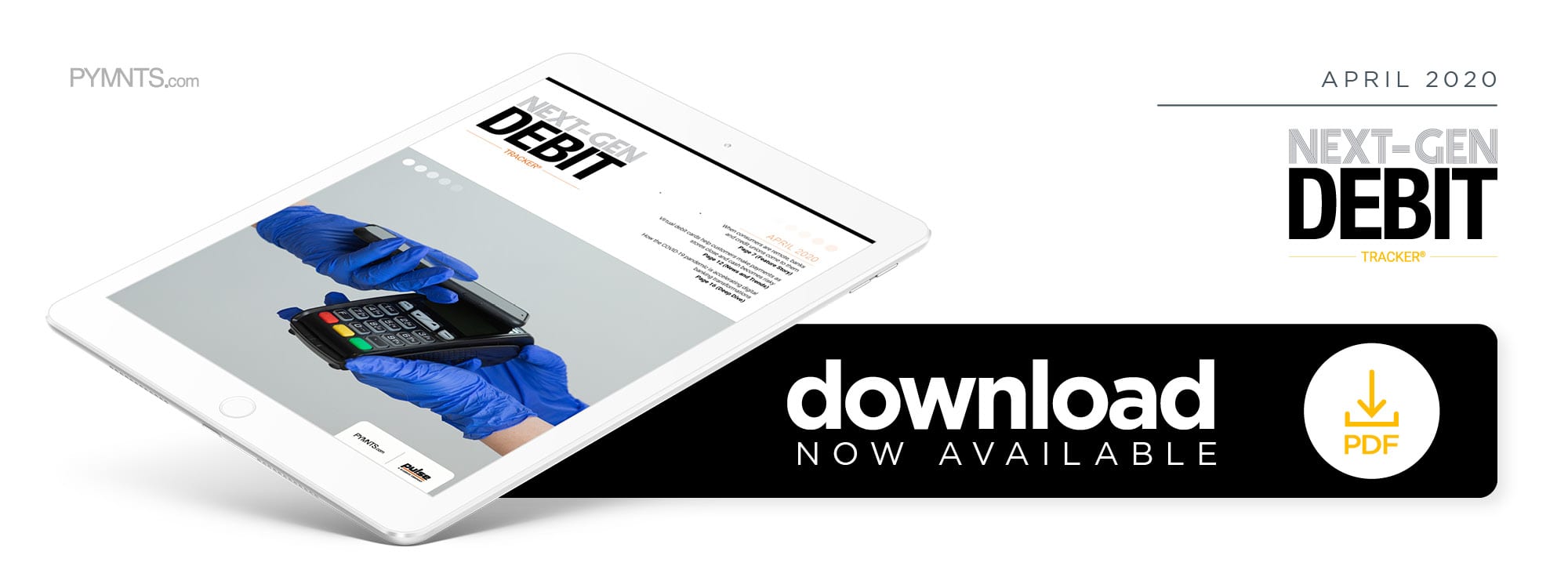When Consumers Are Remote, Banks And Credit Unions Come To Them

Consumers facing job insecurity and COVID-19 stay-at-home orders are rethinking when and how they make payments, and FIs must respond. David Vélez, founder and CEO of Brazil-based digital-only FI Nubank, says that means offering credit-wary customers the right digital-banking tools and products. In this month’s Next-Gen Debit Tracker, Vélez explains how the pandemic is driving consumers online — and toward debit.
The COVID-19 pandemic has prompted traditional banks to take fresh looks at their digital initiatives and has given digital-only banks the opportunity to learn about the advantages and hurdles of serving customers primarily through online and mobile channels. Many physical bank branches have temporarily closed or reduced service hours to better safeguard their employees and spare themselves the costs of operating branches now that consumers are staying home. A recent survey of 1,000 U.S. consumers found that 82 percent had reservations about visiting branches, while 63 percent were more willing to try apps.
The financial industry’s pandemic-related interest in digital innovations accelerates an existing consumer trend toward online and mobile channels, however. The U.S. saw more than 1,500 bank branches close between February 2019 and February 2020, which likely reflected declining consumer demand for in-person services. COVID-19 trends could have long-term impacts on banking, with some observers in the space predicting that consumers who learn to use digital services during the pandemic will not resume visiting branches with the same frequency. Financial institutions (FIs) facing budget strains may thus seek to reduce costs by maintaining fewer branches.
Extending digital offerings is not without challenges, though. Traditional banks and credit unions must find ways to introduce seamless digital services, while digital-only operations must prove to a new crop of consumers that they are trustworthy. This can be an uphill battle, with a 2019 report finding that consumers have 51 percent more trust in FIs that have branches.
Brazil-based, digital-only FI Nubank has had to tackle such issues since it launched in 2014. The bank currently serves 23 million consumers in Brazil and Mexico and incorporated as digital-only to survive and thrive in a Latin American market where the cost of opening enough branches to compete with major players would have otherwise been prohibitive, according to Nubank CEO and founder David Vélez. Online operations enabled the FI to scale and reach a wider market without incurring hefty expenses. Vélez recently spoke with PYMNTS to explain the considerations that go into enabling digital banking services as well as how the FI is adjusting to meet new customer needs during the pandemic.
Building Trust Between Banks and Consumers Online
Potential customers are often wary of trusting their funds to newer digital banks. Entering a market therefore requires digital FIs to first offer services that consumers will see as very low risk and demonstrate that they can be trusted with other offerings, too. Vélez explained that Nubank always enters a market by launching a credit card as its first product, only later following this up with debit offerings. Consumers signing on for credit cards are not handing over any of their money upfront, as they would be if they were depositing funds into an account and then drawing on the money via debit cards, therefore easing them into the banking relationship.
“With credit, you’re just giving somebody a credit line — there’s really no risk for the consumer. The worst thing that can happen to them is nothing. … [They’re] using the card and it’s up to them to pay or not to pay,” Vélez explained. “Once we’re able to build that trust with customers, then we launch debit and savings accounts. That’s the playbook we followed [in Brazil], and today we have more savings accounts than credit customers.”
Credit offerings mean the card issuers — not the consumers — are the ones risking their money, should the other party turn out to be fraudulent. This makes it easier for customers to take a chance on the FI, but it also means that the issuing banks need reliable ways to decide how much credit they can safely extend and to whom. Fashioning creditworthiness assessments for digital environments depends upon pulling on the extra information that digital products offer — especially in countries where tools like FICO scores are not available.
Nubank assesses customers’ behaviors from the point of credit card application and throughout the customer relationship to maintain clear pictures of risks. This includes pinpointing who spends time reading the card contracts and who appears to automatically click through them. The former tend to be more careful and more likely to pay their bills — and do so on time. Other useful details include whether customers request the high end of the credit range being offered or ask for something more moderate, with those seeking the most money possible more likely to be fraudsters or exhibit risky financial behavior, Vélez explained.
Consumers Rely on Debit During the Pandemic
Most of Nubanks’ customers switch to debit once they become more comfortable with the FI. This reflects the overall popularity of debit in Brazil, where most card issuers have high credit card fees. The COVID-19 crisis has exaggerated the disparity between consumers’ preferences for debit and wariness toward credit.
“The number of total transactions has come down — people are staying home and consuming less — but the changes in credit have been bigger than for debit,” Vélez said. “People are less willing to be using a product like credit, where they end up taking a bit of risk in terms of getting in debt or taking financing.”
The pandemic has put consumers into more financially stressful and uncertain situations, which could make them less confident of their abilities to repay any lines of credit they take on. They are thus relying more on debit, which prevents them from overspending or guessing on future income.
Digital Services Extend Banking During Stay-at-Home Measures
Consumers worldwide are staying at home to reduce the likelihood of catching or spreading the new coronavirus. Digital banking services can enable customers to take care of their needs while avoiding bank trips, and in-app chat features can spare account holders from sitting on hold with customer call centers, Vélez explained. Features that were once conveniences have now become critical.
“This crisis is accelerating a trend that was already accelerating: a trend toward digitalizing the entire economy — of every single service,” he said. “After the crisis passes, we’re only going to see even more acceleration of customers willing to use digital banking.”
Older consumers have traditionally been digital holdouts. The pandemic is compelling many in their 60s and 70s as well as other digital abstainers to try out online services for their day-to-day banking or to receive pandemic- related government unemployment benefit distributions. FIs can ease these demographics’ transitions by providing intuitive user interfaces, online video tutorials and other resources, he suggested.
“They’re being forced to open online accounts [to get this aid] because all branches are closed,” Vélez said. “The crisis is forcing adoption in demographics that in normal times would have taken a long time to digitize.”
Banks have long been shifting toward expanding their digital offerings, and the current pandemic has made those initiatives all the more important. FIs that are able to seamlessly extend services to consumers at home can build customer loyalty that will last beyond the current crisis.

